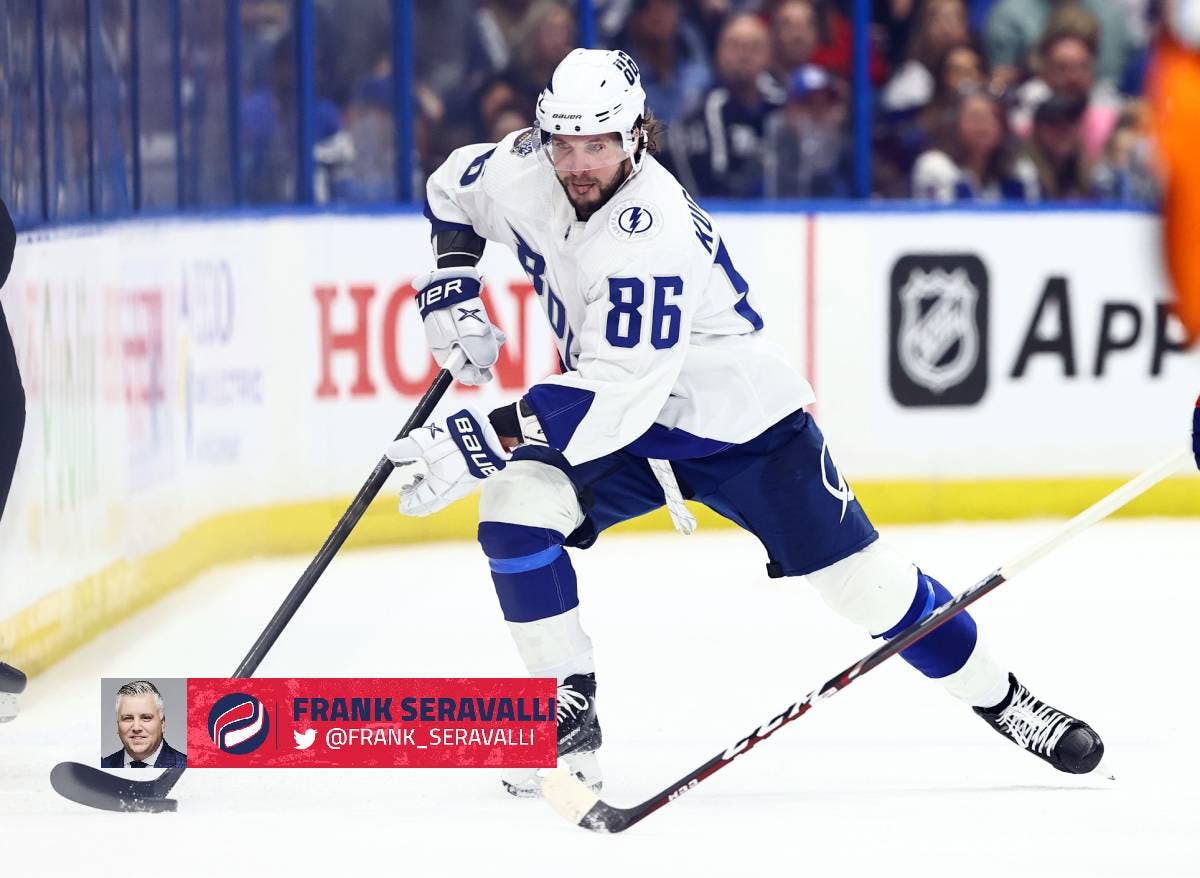Ice Breakers: GMs to discuss potentially closing ‘LTIR’ playoff ‘loophole’

Frank Seravalli is back with some news and nuggets from around the league in this week’s edition of Ice Breakers on the Daily Faceoff Show:
> An intriguing item has been submitted to be included on the agenda at next week’s NHL General Managers meetings in Manalapan, Fla.
At least one GM has requested discussion on closing the so-called “LTIR loophole” that has been used, most notably by the Tampa Bay Lightning with star Nikita Kucherov, where teams above the salary cap wait until the start of the Stanley Cup playoffs to activate healthy players.
Teams are able to do that now and activate players they otherwise would have been unable to afford as the Collective Bargaining Agreement currently is written because there is no salary cap accounting once the playoffs start. The salary cap essentially no longer exists once the puck drops in Round 1.
The GM who submitted the item for consideration believes strongly that wasn’t the intended spirit of the CBA when it was written.
“In an $81.5 million cap world, how can you dress a $90 million roster in the playoffs?” he asked.
His solution?
It’s relatively simple: The salary of the 20 players iced by a team in a playoff game must add up to less than the salary cap limit. This season, that is $81.5 million.
Notice, that is just 20 players, so there is additional wiggle room for teams from the regular season, when most teams carry 23 players and need to fit under that same number. Also, players acquired using retained salary will count as they did during the regular season, not their full number.
Under this proposal, it would not eliminate the ability for teams to add or trade for players using LTIR during the regular season in the event of a legitimate injury.
They would simply need to sit that player out, or make alternate roster decisions, in order to be compliant during the playoffs.
Dress whomever you want, so long as you are compliant within the total salary cap figure.
For frame of reference, the lineup the Lightning iced in Game 1 of the Stanley Cup Final against Montreal cost $89.4 million on the cap. On the night the Bolts hoisted the Cup, they had an $85.4 million roster on the ice with Alex Killorn injured.
Both of those figures far exceed the $81.5 million that would be allowed under this proposal.
The proposal mentioned isn’t the only potential fix.
One fan suggested in response to a recent article by Chris Gear on Daily Faceoff about the LTIR exception that another way would be to make a player who finishes the regular season on LTIR ineligible for the first round of the playoffs. That would force that team to be cap compliant on the last day of the regular season with that player if they’d like to use him in Round 1. Or, if they spent more than 50 percent of the regular season on LTIR, another option would be to make that player ineligible for each of the first two rounds before they could be activated.
There is no shortage of solutions.
At least a handful of NHL GMs have been rankled by the uneven playing field created by teams’ ability and creativity to find relief using LTIR.
“Why have a salary cap and one set of parameters for the regular season, only to abandon it and anything goes at the most critical time of the year?” another GM asked.
The GMs don’t blame the Lightning, or this year’s apparent copycat in the Vegas Golden Knights with Mark Stone – should they qualify for the playoffs. The Panthers also added players at the deadline this year by exceeding the cap with Aaron Ekblad’s injury, and he’s expected to be activated during the first round in May.
No one has disputed the legitimacy of the injuries to Kucherov, Stone or Ekblad. They say it’s a GM’s job to bend the rules to find every advantage possible.
The NHL ruled last year, after investigating Kucherov’s medical records, that nothing was out of place.
“Nothing inappropriate was done here,” NHL deputy commissioner Bill Daly said before Game 1 of the Stanley Cup final. “And at the end of the day, all the managers know what the rules are. The facts seem to align with the situation that allowed Tampa to bring back a significant player in the playoffs.”
When asked last July whether Daly could envision a future change, Daly said: “Certainly, I could.”
“That will be a product of collective bargaining at the appropriate time if we as a league or the clubs feel like change needs to be made,” Daly said on June 28, 2021. “The system was designed the way it’s designed, it’s worked very, very well for the time it’s been in place. I’m not apologizing for what is a sound system and what has been a sound system from the start.”
Some of the NHL’s GMs are saying what has been a sound system may be in need of a tweak.
The real question is: How many of them believe it’s a serious issue? And how strong is their voice?
The belief is the NHL will discuss the issue generally over Monday and Tuesday in Florida, determine whether managers feel it is a valid concern, and examine potential fixes.
It’s up to the GMs, the stewards of the game and voices of their clubs, to let the NHL know next week if this is a problem they want to see rectified. Then it’s up to the NHL, if so inclined, to pursue change.
That might be the trickiest part. Since instituting salary cap changes, or different roster requirements, for the playoffs would constitute a “material change” of the CBA, it would need to be negotiated with the NHL Players’ Association.
Stay tuned.